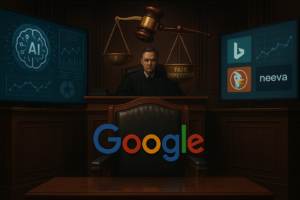OpenAI’s Breakthrough: A 99.9% Accurate ChatGPT Content Detector
In a world increasingly dominated by AI-generated content, OpenAI’s latest innovation—a content detection tool with an unprecedented accuracy rate of 99.9%—is set to revolutionize how we identify AI-written material. This article delves into its implications for academia, content creation, and potential challenges.
The Challenge of AI-Generated Content
In the rapidly evolving landscape of artificial intelligence, the ability to generate human-like text has become both a marvel and a challenge. As tools like ChatGPT gain popularity, concerns regarding the integrity of academic work and authenticity of content have surged. OpenAI, the creator of ChatGPT, has now taken a significant step to address these concerns by developing a content detection tool boasting an accuracy rate of 99.9%.
With the rise of AI writing tools, students and professionals alike have turned to ChatGPT for assistance in crafting essays, research papers, and articles. While these tools can enhance productivity and creativity, they also risk undermining the educational process. Reports indicate that AI-generated content has already infiltrated scientific journals and academic submissions, prompting calls for effective detection methods.
The Detection Tool
OpenAI’s new tool aims to combat this issue by embedding an invisible watermark into the text generated by ChatGPT. This watermark acts as a digital signature that allows the detection system to identify AI-generated content, even if the text is modified or reformatted. The remarkable accuracy of this tool—99.9%—not only sets a new standard in the field but also highlights the urgent need for reliable detection methods in an age of pervasive AI.
Controversies and Concerns
However, the implementation of this detection technology has not been without controversy. Internal discussions at OpenAI have revealed mixed feelings about its public release. The primary concern is that introducing such a feature might alienate users who fear being unfairly flagged as AI content creators. Additionally, the potential for users to bypass the watermark—such as by translating the text into another language and back—has raised eyebrows within the organization.
Advocacy for Academic Integrity
Despite these challenges, advocates for the tool emphasize its role in maintaining academic integrity and fostering responsible AI usage. The implementation of AI detection systems can help educators and institutions uphold rigorous standards in academic writing and research, ultimately preserving the value of human-created content.
Broader Implications
As OpenAI navigates this complex landscape, the broader implications of AI content detection will undoubtedly be felt across various sectors. From education to journalism, the need for clear demarcations between human and AI-generated content is becoming increasingly crucial. With the technology ready for deployment, it remains to be seen how OpenAI will balance user concerns with the pressing need for accountability in content creation.
In conclusion, OpenAI’s content detector is not just a technological advancement; it’s a pivotal tool in the fight for authenticity in the digital age. As we continue to embrace the possibilities that AI presents, we must also commit to ensuring that these advancements serve to enhance, rather than undermine, our systems of knowledge and creativity.


